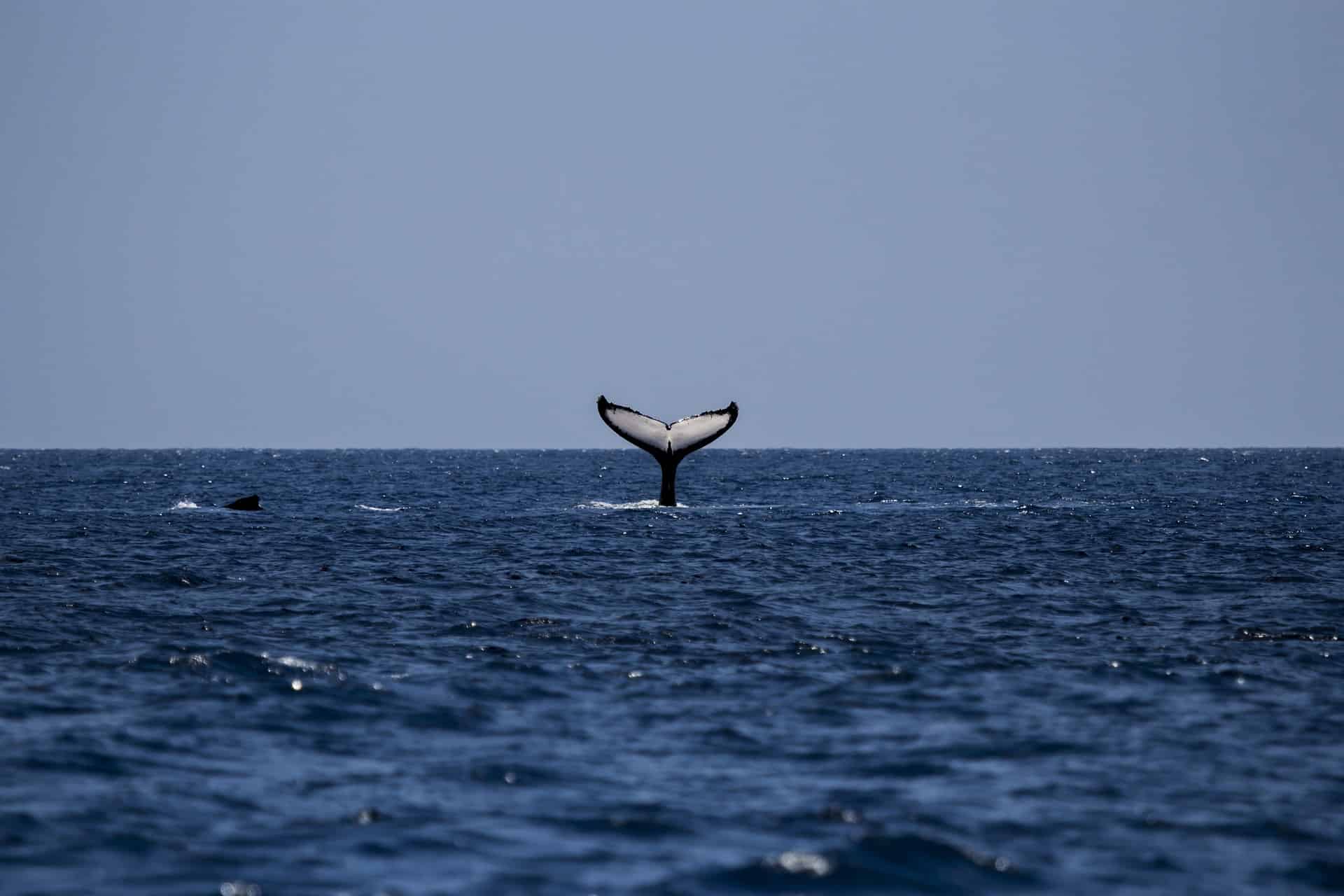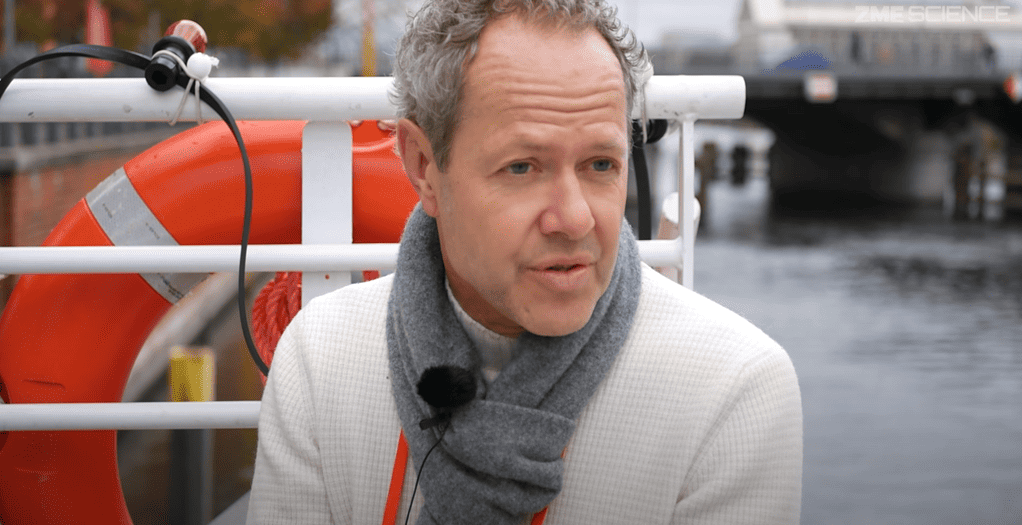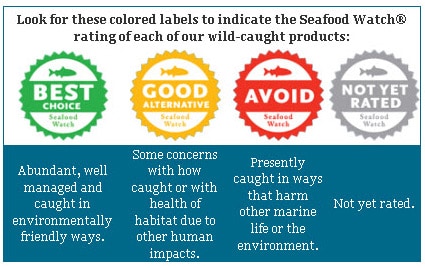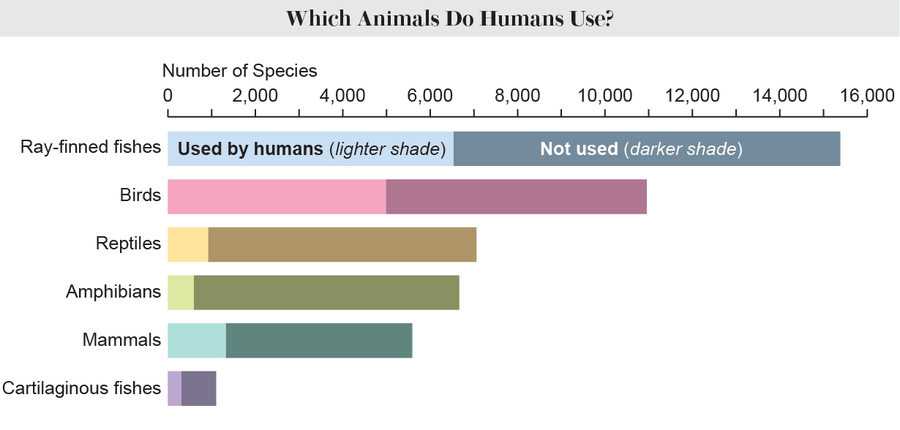
The ocean is the lifeblood of our planet. It’s an extraordinary and largely unexplored place covering over 70% of Earth’s surface, teeming with over a million marine species. Species on which the livelihoods of billions of people depend. The ocean nourishes us, connects people, and brings immense joy.
It doesn’t matter where you live — whether you’re near a beach, in the countryside, or in the middle of a big city — the ocean still profoundly affects your life every day.
If oceans are healthy, the planet is healthy. However, this is sadly not the case at the moment. The ocean is under intense pressure due to human activity, which pollutes its waters and destabilizes its marine biodiversity.
It’s not too late to act, though. I recently caught up with Boris Worm, Professor of Marine Conservation at Dalhousie University in Canada. In a candid interview, the researcher reminded us all of the huge value the ocean provides. It’s from this place of appreciation that the seeds of a new, more thoughtful attitude toward the ocean may grow.
“In my work, I really want people to appreciate how every second of their life they’re connected to the ocean simply by breathing. Half of the oxygen produced on this planet every year is produced in the ocean, but also a lot of the food we eat comes from the ocean. If you eat yogurt, for example, it often has alginates in it or other substances derived from the ocean to make it more solid. Seafood sustains about half of the world’s population with essential nutrients — but also our weather. All of the water that falls from the sky evaporated over the ocean at some point. And the ocean keeps our climate pleasant and stable by taking up about 90% of the heat generated by greenhouse gases,” Worm told ZME Science between sessions at the Falling Walls Conference in Berlin.
“So whether we live inland or by the coast, the ocean really shapes our life, but more importantly, our life shapes the ocean as well by what we consume, the garbage we generate, some of the plastic that gets into the ocean — millions of tons per year — and very much by climate change which affects the ocean more every year, and we’re very concerned about that.”
A distressed ocean
Despite the ocean’s generosity, human activity poses significant threats to its health. Overfishing, pollution, and climate change are degrading marine ecosystems at an alarming rate.
Of these big three, overfishing is currently the most significant threat to the ocean. In 2006, Worm and colleagues published a landmark study that showed ocean life was on the brink of a disaster. The study painted a grim picture of declining ocean species and a potential global fishery collapse by 2048.
“Historically and to this day, probably overfishing is the major threat to the species living in the ocean. We have a lot of species that are endangered, many shark species for example, some turtles, many seabirds, and also many other fish species and some invertebrates that are threatened by indiscriminate fishing or poorly regulated fishing,” Worm said.

The Canadian marine biologist’s research served as a crucial wake-up call. The good news is that these harrowing projections helped mobilize people in the right direction. The ocean area designated for conservation has swelled from 1% to nearly 8% since the study’s publication, although only 2.9% is covered by what can be described as ‘fully or highly protected’ areas. While still short of the 17% conservation rate seen on land, it’s a significant step forward, with ambitious goals for further protection on the horizon.
Moreover, the focus on conservation has expanded beyond remote areas to include the coastal waters that cradle human civilization. In parallel, there’s been a fundamental change in how resources are exploited, led by policy reforms like the amended Magnuson-Stevens Fishery Conservation and Management Act in the United States. This legislation outlaws overfishing and helps to rebuild depleted stocks, paving the way for the recovery of numerous species.
“This is a very fixable problem, and the good news is that it is being addressed in many places. But we need to do better to make sure that species that are at the brink of collapse or extinction are coming back as we did for whales, for example, many of which are recovering because of a global moratorium for whaling about 30 years ago,” Worm said.
Progress in sustainable seafood

The private sector, too, has stepped up, with major seafood retailers committing to sustainable sourcing practices. Sustainable seafood refers to fish and shellfish, whether caught in the wild or raised in farms (aquaculture), that are obtained in ways that protect biodiversity. It’s all about harvesting seafood in a way that safeguards the health of ocean habitats, other marine life, and the welfare of nearby communities and environments.
In the U.S., for instance, consumers can now look for ecolabels such as those from the Marine Stewardship Council (MSC) or the Best Aquaculture Practices (BAP). These certificates highlight seafood caught using methods that minimize environmental impact and help replenish fisheries. Mobile apps like Seafood Watch can help you get real-time information on sustainable seafood options at your local grocery store.
None of these options, however, are perfect since fishery conservation is decentralized across the world. Cod caught in one part of the world (or even one part of the country) might be sustainable, but in other places, it could be unsustainable. To add to the confusion, there is still a looming lack of awareness and clarity as to what the many different seafood labels mean exactly. A University of Guelph study found the vast majority of Canadian seafood consumers could not grasp the meaning of labels such as Responsible Fishing Scheme or Ocean Wise, even though some of the respondents recognized the brands themselves.
“It really depends where you are, but broadly speaking wild mussels, for example, or oysters, they tend to be a good choice because they’re low in the trophic chain, they don’t need to be fed, and they’re actually cleaning the water as they grow. Sometimes fish low in the food chain can be a good choice like herring and mackerel, but it depends on where you are. Where I live, for example in Eastern Canada, those stocks are over-fished. Also, cod in my region is over-fished, but in northern Norway, the stock is doing really well. So it depends on where it comes from, but that information is very available now. Actually, in Europe, you need to label the fish, what it is and where it comes from and how it was caught, and all of that can inform smart choices through those report cards that are available,” Worm said.
Worm points out that while overfishing has historically been a major concern, climate change now looms as the greatest threat in the long term. It has caused coral bleaching, seagrass meadow destruction, and a decrease in the ocean’s productivity and oxygen levels.
“Stopping climate change, of course, we need to do to save ourselves, but we also need to do it to save the ocean,” the biologist said.
Human exploitation: the crux of the problem on both sea and land
In 2023, Professor Worm co-authored a comprehensive analysis of the impact of human activity on 45,000 species of vertebrates, such as fish, mammals, birds, reptiles, and amphibians. Forget about lions or even T. rex. These findings showed that humans are by far the most successful predator probably ever, exploiting up to 300 times more species than any other known predator. Roughly a third of all vertebrates are fished, hunted, farmed, used as pets, and collected for trophies.

This path of unnatural selection can have dramatic repercussions across ecosystems. This is another fixable problem — at least concerning the intensity and scope of animal exploitation — since many vertebrates are used (or abused) by humans in ways that are not critical to our survival.
For instance, a lot of animals are hunted or captured not for food, but for other, more frivolous reasons. The marine biologist recounts a story about how the Harry Potter series, where owls are featured prominently, sparked an entire ring of illegal wildlife trade to fuel demand for pet owls. Demand for Chinese traditional medicine products, most of which are classed as pseudoscience, is responsible for driving tigers, rhinos, harp seals, bears, and lions to the brink of extinction. Even donkeys aren’t spared by this trend, six million of which are slaughtered every year for their skin used to make ejiao, a traditional Chinese medicine and beauty product.
“Humans have always hunted large animals, and we have gradually expanded our footprint to directly exploit about 15,000 of the 45,000 vertebrate species we know of on the planet. What surprised us about this study is that while most fishes in the ocean are taken for food, a lot of animals on land are taken for other reasons. So not to eat, but for example as pets or ornaments for cultural reasons, or medicinal reasons. And a large number of species is threatened by those uses that are not actually needed maybe in the same way as food is. So I think it surprised us how many species that are very obscure that even as biologists we’ve hardly heard about are being used somewhere and are threatened by that use. So, I think we need to take a good look at how we’re using biodiversity,” Worm said.
A positive impact
Although it’s easy to get depressed about how humans treat the environment, and the ocean in particular, this feeling doesn’t help create change. This is why Worm is taking a proactive role in civic initiatives, such as the Ocean School he founded where children and adults alike are educated about the ocean and its many wonders. Witnessing firsthand the transformative power of education on individuals’ perspectives on the ocean is a source of inspiration for Worm and a testament to the potential of raising awareness for ocean conservation.
“I’m always touched when I see how people use our Ocean School program and how it makes their day, how kids just light up and teachers really get into it or parents. We had parents during the pandemic who wrote us about Ocean School: ‘I got my kids in front of that, and they were researching sharks and swimming with whales and dissecting codfish and learning about sustainable fishing, and they were telling me all these things I didn’t know’, said the parents, and one parent said this was a godsend during the epidemic and something that really transformed her view of the ocean and their kids’ view of the ocean,” Worm said.
“I live by the ocean, I breathe the ocean every day, I’m wildly in love with the ocean, and to instill that in others and when I see that spark come on and people really being interested and passionate about the ocean, that’s what keeps us going and I think that’s what we need.”






